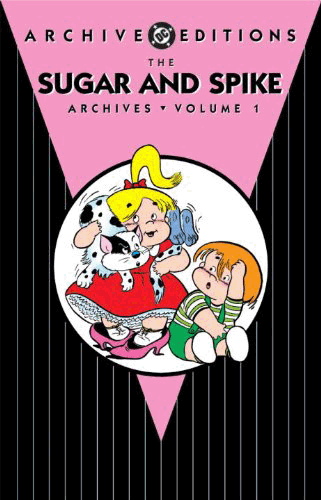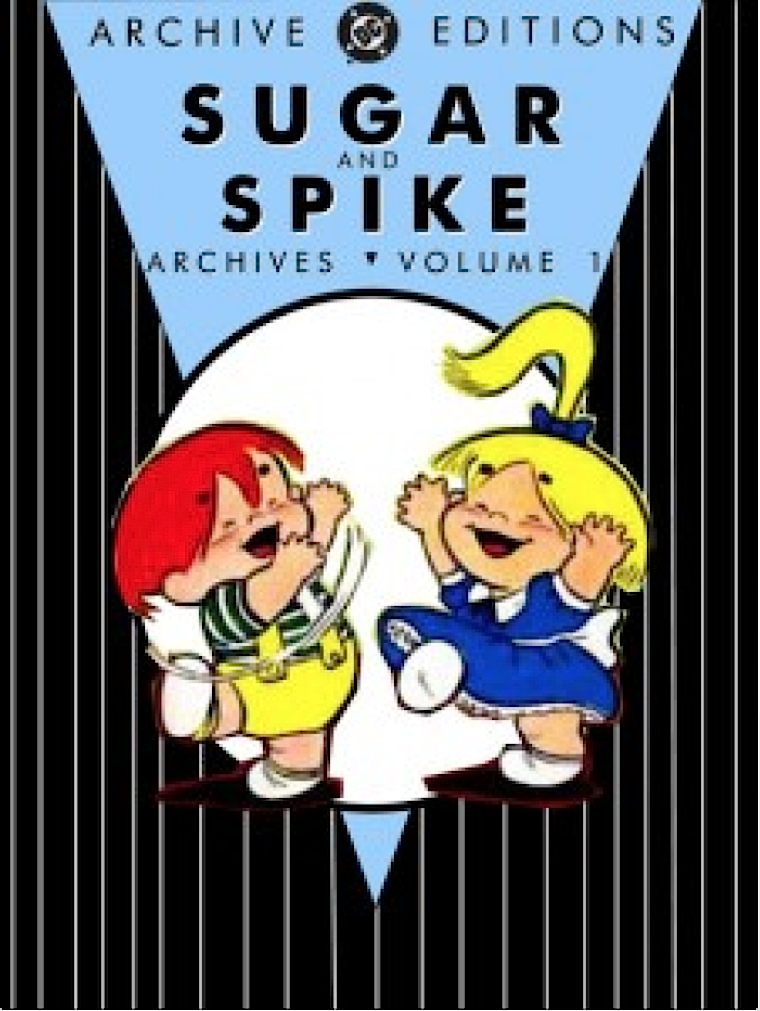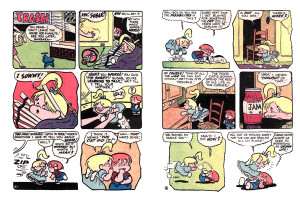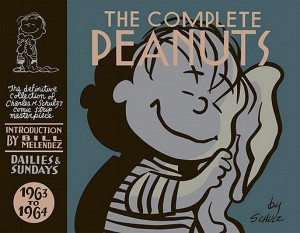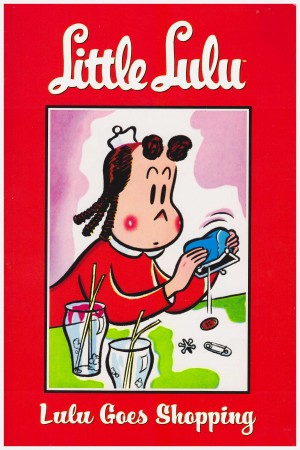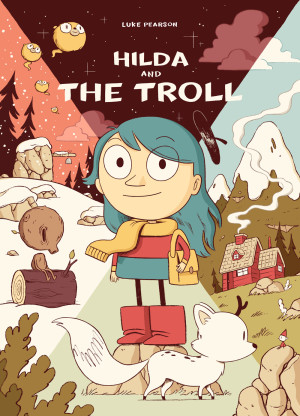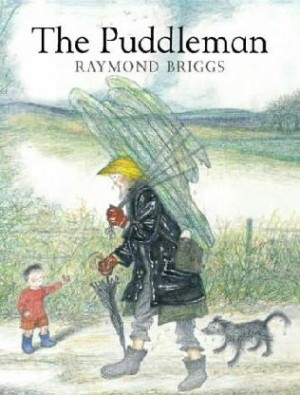Review by Woodrow Phoenix
Sugar Plumm and Cecil ‘Spike’ Wilson are two toddlers who live next door to each other. They jabber away to their parents in their cute but completely incomprehensible ‘Skxlplch Glop Blpp Glx’ baby talk, making absolutely no sense at all. Until one day when Spike’s parents invite their new neighbours over and the two toddlers realise they can understand each other just fine. “Naturally! That’s because we both talk baby-talk!” Sugar tells Spike. “It’s the only language that makes any sense!” Their parents think it’s hilarious. “Listen to them jabbering away – by golly you’d think they could understand each other!” “But of course they can’t!”
Sugar & Spike was first published in 1956. It was created, written and drawn by Sheldon Mayer, an editor at DC Comics at the time. He had previously created Scribbly and The Red Tornado and contributed to the creation of Green Lantern and The Justice Society of America, but Sugar & Spike was something different, with appeal to a much broader audience. The two toddlers were tiny people in an oversized world, filled with unknowable objects governed by rules that made no sense to them. The fun was in watching them trying to figure things out, devising ways to get what they wanted out of the adults who had no idea that their children could think for themselves. It was a very successful premise – which in later years would be a big hit when it was used as the basis for the cartoon Rugrats. Mayer had the opportunity to make Sugar & Spike an animated cartoon long before then, but turned it down because he didn’t want anyone else working with his characters. This was also why Sugar & Spike only lasted fifteen years; when Mayer was unable to draw it anymore the strip stopped with him.
Sugar and Spike Archives Vol. 1 collects the first ten issues of the comic, establishing the personalities of the two toddlers very quickly in the first issue. Sugar was infatuated with Spike, whom she christened ‘Doll-Boy’ and she was also bossy, restless, determined and fearless. Spike was easy-going but somewhat goofy, happy to be ordered around by Sugar and constantly amazed by the depths of her schemes to get what she wanted, which usually got both of them into trouble. In their shared baby-talk language they invent funny names for all the new objects they discover – the telephone is the yak-yak box, a biscuit is an eating-wheel. There’s a great expansion to story possibilities when they discover that babies of all species can understand each other, whether baby horses or baby lobsters. Their parents and other grown-ups who are initially only seen from the waist down become fully-drawn, bigger parts of the action as they take the two toddlers outside of their houses for fun and confusion at the beach, in department stores, at the zoo. And everywhere they go, Sugar and Spike’s attempts to guess how parents think usually backfire. Mayer’s stories are cleverly constructed to work on two levels as simple slapstick entertainment that will amuse children and as conceptual language games that will entertain adults. Sugar & Spike is a charming and funny book that is definitely a product of its times, but remains amusing today.
The content feels a little over-produced in this hardback form. A chunky softcover with twice as many stories would probably be a more inviting way to get at this material, but whatever form it arrives in, it’s a surprisingly funny read. The two toddlers are great characters and you’ll want to see more of them.
